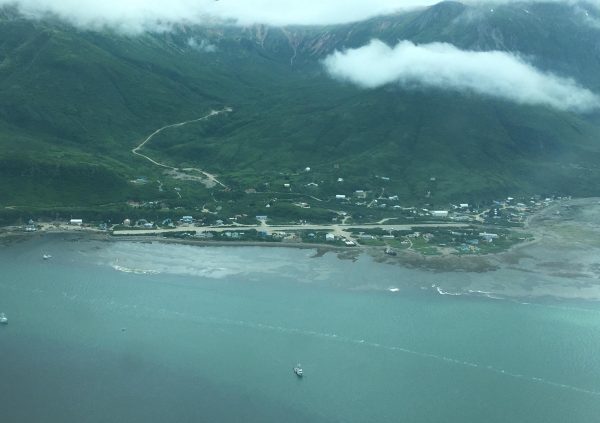
Over the summer, drought and damages to Chignik Lagoon’s water distribution system left the village without drinkable water. The state issued a boil water notice in July, and the wells were dry by August. Residents relied on Packers Creek to supplement their needs through October. Now those worries have subsided; at the end of October the wells filled up and started producing water again.
“Things have calmed down a little bit,” said Village Council Administrator Michelle Anderson. “We’ve been able to pump water from the wells again. We’ve had significant rainfall — it’s supporting our wells for the moment. Without snowfall and pack we may run into an issue this winter, but we should make it through the summer.”
Related: A water shortage looms in Chignik Lagoon
The village has bottled water, which was flown in during the summer and fall, left over in case the wells dry up again.
The lagoon is still on a boil water notice — the wells are cracked and the distribution system needs repairs. But the council is working to address those issues. The Bristol Bay Area Health Corporation flew out engineers to help repair parts of the distribution system last month. Anderson says the council is exploring additional options.
“We are actively looking for funding to complete an engineering assessment and design. To either drill a new well, find a surface water source and/or fix or replace distribution systems, Anderson said.
Read more about the 2019 drought in Alaska and how communities are recovering
A mix of state and federal funds are available to finance drilling a backup well. Anderson wants that to coincide with the assessment and design of a new distribution system.
The Alaska Health Consortium, Department of Environmental Conservation and Indian Health Services are also working with the lagoon. The United Methodist Committee on Relief, a humanitarian aid organization, has provided emergency funds for repairs and is helping the lagoon to fund engineering designs.




